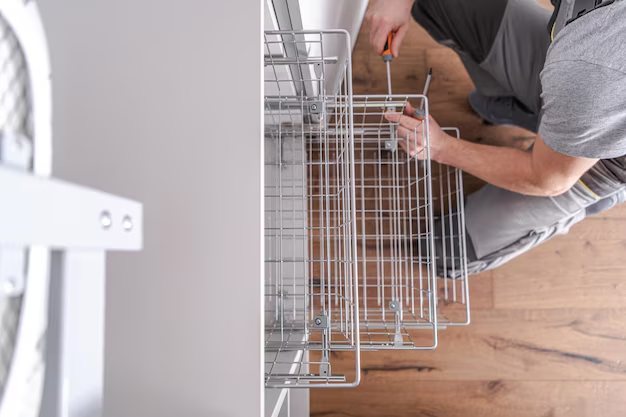Reviving Your Refrigerator: An Expert Guide to Thawing a Frozen Water Line
A refrigerator is an essential appliance in any household, reliably keeping our food and drinks fresh and cool. However, like any other piece of machinery, it can encounter issues from time to time. One such common nuisance involves the water line freezing. This problem might seem daunting at first, but rest assured, with some easy-to-follow steps, you can tackle this issue without a hitch. This guide will walk you through how to thaw a frozen water line on a refrigerator, providing practical advice and valuable insights to help you prevent such issues in the future.
Understanding the Issue: Why Does the Water Line Freeze?
Common Causes
There are several factors that might cause the water line in your refrigerator to freeze. Understanding these causes is crucial for effectively troubleshooting the problem:
- Temperature Settings: If your freezer is set too low, it can cause the water line to freeze.
- Insufficient Usage: If the refrigerator’s ice and water dispensers are used infrequently, the water can sit still and freeze.
- Damaged Door Seals: Worn-out or damaged door seals can allow warm air inside, triggering condensation and freezing within the line.
- Blocked Ventilation: Poor airflow due to blocked vents can result in uneven cooling, leading to frozen components.
Conclusion to the Causes
Pinpointing the root cause of your frozen water line helps you not only thaw it effectively but also take preventive measures in the future.
Techniques to Thaw a Frozen Water Line Safely
1. Adjusting the Temperature Settings
One of the simplest solutions is to adjust the temperature settings on your freezer. Increasing the temperature by a few degrees can help thaw the water line gently without requiring physical intervention.
- Steps:
- Locate the temperature control inside the fridge or freezer.
- Adjust the setting to increase the temperature slightly.
- Allow the refrigerator to sit for a few hours and check if the water line resumes normal function.
2. Manual Thawing with a Hair Dryer
A hair dryer can serve as an effective tool to direct warm air onto the frozen line until the ice melts.
- Steps:
- Unplug the refrigerator to ensure safety.
- Locate the water line, usually found at the back or beneath the fridge.
- Use the hair dryer at a low heat setting, carefully moving it back and forth along the length of the line.
- Continue until ice blockage melts and check for normal water flow.
3. Using Warm Water
Another harmless method involves using warm water to naturally thaw the line.
- Steps:
- Turn off or unplug the refrigerator.
- Prepare a basin of warm water.
- Safely soak a washcloth in the water, wring it out, and apply it to the frozen section.
- Repeat the process until the water line is thawed.
Pro Tips for Thawing
- Patience is Key: It might take some time for the ice to melt, especially if the blockage is substantial.
- Safety Precautions: Always ensure electrical appliances are powered off before starting.
- Consistent Checking: Repeatedly check the water flow during the thawing process to avoid over-thawing and potential water spills.
Preventing Future Freezes
Regular Maintenance Tips
Monitor Temperature Settings: Keep regular checks on freezer settings to ensure they aren't too low.
Routine Usage: Regularly use the ice maker or water dispenser to maintain consistent flow and prevent freezing.
Seal Check: Regularly inspect door seals for wear and tear. Replace seals that are no longer effective.
Ventilation Check: Ensure nothing obstructs the fridge vents, so cold air circulates evenly.
Seasonal Maintenance
- Winter Adjustments: Consider revising the fridge and freezer temperature settings during colder months to prevent unnecessary freezing.
Exploring Related Concerns
Recognizing Other Freezer Issues
A frozen water line might be just one part of a bigger refrigeration issue. Here are some other problems you might encounter:
- Frost Build-Up: This can occur anywhere in your freezer, often due to issues with the defrost heater.
- Inadequate Cooling: Sometimes caused by a malfunctioning thermostat or compressor.
When to Call a Professional
If after trying these methods, the problem persists or if you encounter complex technical issues, consulting a professional technician is wise. They have the expertise to diagnose deeper mechanical problems safely.
Highlighted Summary & Tips: ✅
In this guide, we’ve walked through practical steps to address a frozen water line, highlighted ways to prevent future issues, and provided insights into related refrigerator concerns. Here’s a succinct recap to keep handy:
- 🌡️ Adjust Your Freezer Temperature: Prevent initial freezing by monitoring and adjusting settings.
- 🔧 Use Simple Thawing Techniques: Hair dryers and warm water are effective and convenient for thawing.
- 🔍 Regular Check-Ups: Perform routine checks on door seals and ensure unobstructed vents.
- 🚨 Know When to Seek Help: For persistent issues, professional assistance is recommended.
Employing these tips and techniques makes sure your refrigerator stays in top condition, delivering the chilled water and ice your household relies on. Enjoy peace of mind knowing you’re equipped to handle and prevent frozen water line issues!
